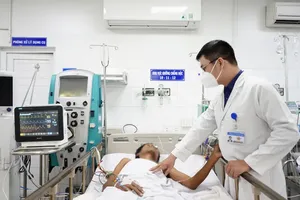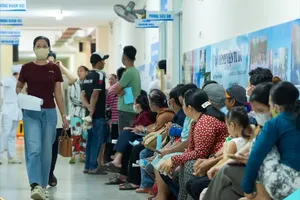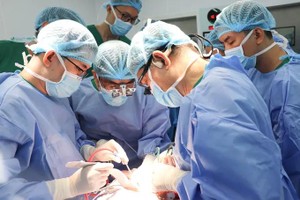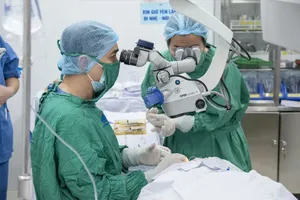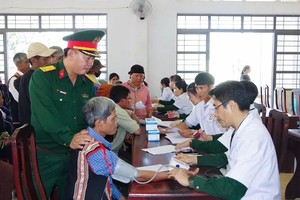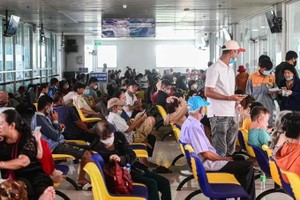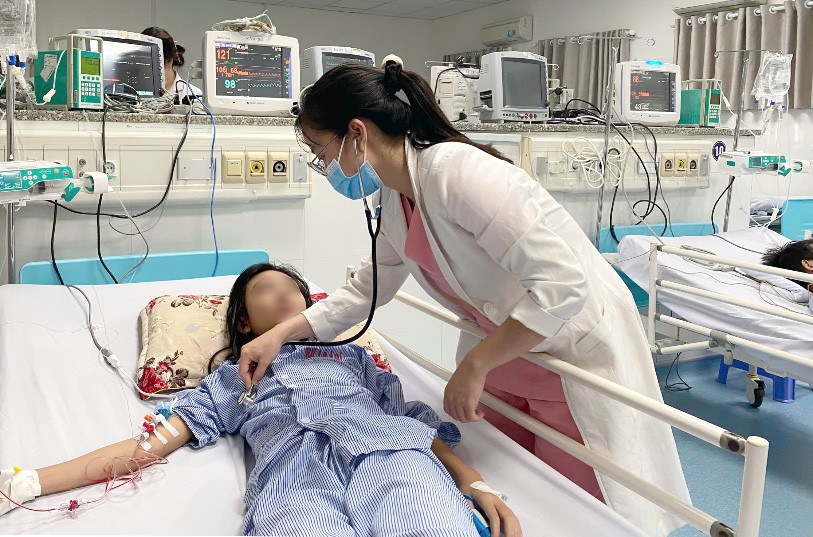
Ho Chi Minh City is witnessing a sharp uptick in dengue fever cases, with health officials warning of a heightened risk of community spread. In recent days, hospitals have reported an increase in severe cases requiring hospitalization, prompting the health sector to intensify both prevention and treatment efforts.
At Children’s Hospital 2, wards in the Infectious Diseases Department are operating at full capacity. Numerous young patients are being treated for serious complications associated with dengue fever, including liver failure and polyserositis (fluid accumulation in multiple membranes).
According to hospital records, between 10 to 15 new dengue cases have been admitted daily over the past two weeks, pushing the number of inpatients to between 30 and 50 - a 50 percent rise compared to late June.
Dr. Tran Ngoc Luu from the Department of Infectious Diseases at Children's Hospital 2 stated that the primary circulating virus strain is Den-2, which is more virulent than other strains and is leading to a significant number of severe cases.
At Vung Tau Hospital, from the start of the year until the end of July, there have been 293 reported cases of dengue fever, with 205 of those requiring hospitalization. In July alone, 97 patients were admitted, which is nearly equal to the total number of inpatients from the first six months of the year. Currently, the hospital is seeing 3 to 5 new dengue fever cases daily, many of which present with severe complications.
Head of the Infectious Diseases Department at Vung Tau Hospital Dr. Tran Minh Phuong noted that many patients arrive late, often in shock, with low platelet counts, or suffering from pleural or abdominal effusions. According to the Ho Chi Minh City Center for Disease Control, nearly 17,000 dengue fever cases have been reported citywide since the beginning of the year, marking a 168.8 percent increase compared to the same period in 2024, with 10 fatalities.
Areas with high case numbers include Cu Chi, Vinh Loc, and Ba Diem communes, as well as Binh Tan, Binh Duong, Di An, Tan Khanh, and Thuan Giao wards. Several wards and communes in the city have reported dengue fever cases exceeding the warning threshold including Phuoc Thang, Rach Dua, Tam Thang, and Vung Tau wards, which have experienced over 170 outbreaks.
Doctor Le Hong Nga, Deputy Director of the Ho Chi Minh City Center for Disease Control, stated that based on the city's annual epidemic trends, the peak season for dengue fever typically begins to rise in mid-June and is anticipated to continue until the end of October.
Amid the complex developments surrounding the dengue fever epidemic, the Ho Chi Minh City Department of Health has formulated a plan for patient admission and treatment to ensure that sufficient resources are in place to implement solutions swiftly and effectively as case numbers rise. It is essential to mobilize all available resources to establish appropriate treatment pathways between medical examination and treatment facilities.
Hospitals are prepared to increase the number of beds available for dengue fever patients; they are also ready to deploy resources immediately when called upon by the Department of Health in response to the epidemic's progression; and it is crucial that the staff involved in the examination and treatment of dengue fever are professionally trained to meet the treatment capacity requirements.
To effectively tackle the epidemic, Deputy Director of Vung Tau Hospital Dr. Tran Thien Truong mentioned that the hospital has proactively created a treatment plan for each severity level, ensuring that beds, medications, and medical supplies are fully prepared; additionally, they have organized consultations and designated separate treatment pathways for adults and children.
The hospital is prepared to add 10 more treatment beds in the Infectious Diseases Department and 15 beds in the Pediatrics Department if necessary, as affirmed by Dr. Tran Thien Truong. Moreover, a plan is in place to coordinate and increase personnel to ensure uninterrupted treatment activities. The hospital remains ready, guaranteeing sufficient human resources, equipment, and medical supplies to respond promptly as case numbers rise.
